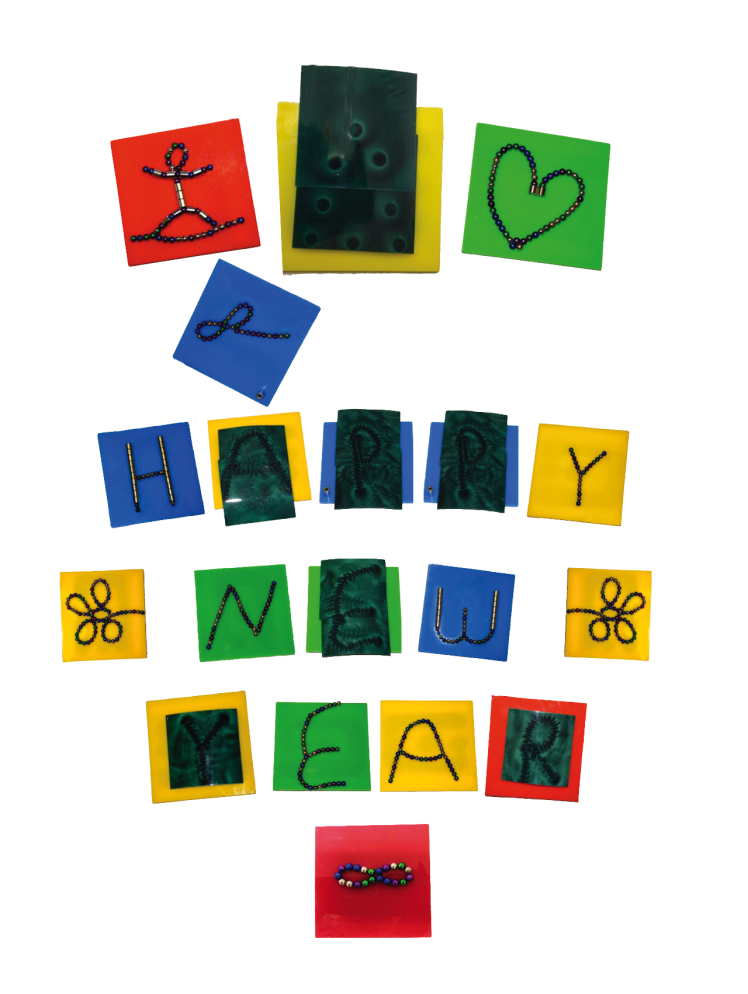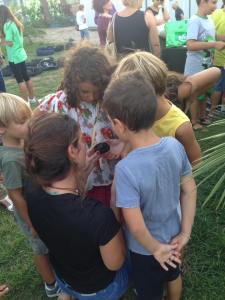Coming up
July 2017, University of Vienna
KinderuniWien | Fun learning experience for pupils (7-12 years of age)
Past events
28 February 2017, University of Vienna
Junior Science Club | Workshop for high school students (14 years of age)
The workshop was organized in order to introduce pupils not only to the world of science and academia, but also to explain what means to be a scientist. The event had three parts: firstly, there was a lecture about the soft matter and computational physics; secondly, the children had a chance to make their own experiments with magnets; finally, we discussed what kind of life has a scientist, which possibilities, limitations and perspectives in comparison to people working outside the academia. It was rewarding to see, how the pupils (almost professional sportsmen) got curious about magnetic soft matter and excited about the possibility of making a physics experiment.
24 February 2017, University of Vienna
Plus Lucis Fortbildungswoche 2017 | Excursion for teachers in Physics and Chemistry
During the workshop for teachers we first gave an educative lecture about dipolar soft matter and new trends in this branch of physics. The lecture was followed by questions and experimental demonstrations. In the second part of the workshop, we discussed innovative methods of teaching physics at school. During this part, teachers were offered to try several experiments and get acquainted with the simulation approaches in the field of magnetic soft materials.
30 January 2017, University of Vienna
FIT – Frauen in die Technik | Information day for female students (from the age of 15 years)
The event involved the Art project entitled Dark Matter. It is the result of collaboration between artists Bogomir Doringer and Bernd Oppl. In this workshop two ideas were coming together. Mr. Oppl for a long period has been busy with investigation of architectural structure represented on small scale as film set models. In his models surreal transformations are taking place. This time the designed room welcomed an alien looking sculptural form. Artist Bogomir Doringer has been working since 2010 with ferrofluid, looking for ways to stabilize and introduce this new material into arts. Based on the artists knowledge and experience in working with ferrofluids, we invited two artists to conduct experiments and workshop with a group of female students.
16 December 2016, University of Vienna

UniClub plus | Workshop for young refugees (14-19 years of age)
28 November 2016, Vienna (Austria)
As part of the physics:science@school programme – a collaborative project between the University of Vienna Faculty of Physics and the Vienna School Board – AoM had the opportunity to talk to senior school students from the Schopenhauer Realgymnasium in the 18th district of Vienna.
In a multi-media presentation we discussed several aspects of magnetic soft matter and in particular, how we use computational physics to study it. Particularly enjoyable for the audience members (and presenters too) was a portion of time dedicated to some live ferrofluid experiments. These experiments involved the creation and exhibition of some beautiful ferrofluid sculptures, which further illustrated the scientific concepts we were discussing.
Our talk had a particular focus on the nanoscopic building blocks used to create magnetic soft matter, highlighting the ways in which they combine to produce useful materials with real world applications.
AoM would like to say a big thank you to Lisa Weiß and Clemens Moritz for their fantastic support of this event and brilliant contributions to the talk. Lisa and Clemens are both PhD students from the computational physics group at the Faculty of Physics. Lisa gave the students a very interesting introduction to soft matter materials and really encouraged some great participation from the audience. Clemens managed to simplify some of the complicated aspects of computational physics to give a concise overview of why it can be so useful in the design and characterisation of new materials.
At the end of our talk the student (and teachers) were invited to come up to our experiment table to try manipulating some ferrofluid for themselves. They managed to create some really interesting designs, some of which can be seen in the collection of photos on the website of the Schopenhauer Realgymnasiums.
10 November 2016, Vienna (Austria)
The International Science Centre and Science Museum Day (ISCSMD) was an initiative brought about through the partnership of the United Nations Educational, Scientific, and Cultural Organization (UNESCO), the International Council of Museums (ICOM), the Association of Science and Technology Museums (ASTC) and five main science centres and science museum networks across the world. In fact, this year saw the inauguration of this event on the occasion of the World Science Day for Peace and Development.
Art of Magnetism (AoM) participated in the ISCSMD at the Naturhistorisches Museum in central Vienna, in which we formed a portion of the “Aktionstag des ScienceCenter Netzwerk“. One of the criteria for the day was that each activity should promote interest in one of the 17 sustainable development goal declared by the United Nations (UN) and open discussions on global questions and topics.
AoM were chosen to reflect – Sustainable Development Goal 4: Quality Education: “Ensure inclusive and equitable quality education and promote lifelong learning opportunities for all”
As the primary focus of our project is to educate and inform, this is perhaps the goal that is most closely related to our objectives. We hope to motivate the participants at each of our events and instil in them the desire to seek out further and higher education in order to pursue an interest in science and research.
Another aspect that is pertinent here is our incorporation of artistic mediums to communicate and educate. This diversification of teaching is important as it provides an alternative route in which to access and appreciate the scientific concepts within.
Participant in the ISCSMD were of all ages, mainly from the Vienna area but also from farther afield. Those who paid our installation a visit got the opportunity to explore magnetic soft matter in a number of interesting ways. Perhaps the most popular was our large glass vessel of a sizable quantity of ferrofluid suspended in a salt solution; participants were invited to manipulate the ferrofluid using strong magnets and watch it come alive within. Visitors were also encouraged to design patterns and motifs using small magnets from which to construct ferrofluid mosaic tiles. The ferrofluid, held in a petri dish, was place on top of the magnet designs and conformed to the magnetic field lines present, creating three-dimensional tiles of characteristic ferrofluid structures, like spikes and ‘magnetic hedgehogs’.
In addition, we were extremely happy to be able to present an artwork by our artist collaborator Renate Quehenberger, who we were also fortunate enough to have join us on the day. Her piece of interlocking tubes of neon lights was informed and inspired by dipolar fields and the duality of both magnetic and electric phenomena.

The magnetic force is symbolised by two overlapping circles; one in blue (filled with neon-argon gas) and the other in red color (filled with neon); the short lines in the center are indicating the evolving electric force.
References: Quehenberger, R. (2012), ‘A reflection on theories of light’, Quantum Theory: Reconsideration of Foundations 6, AIP Conference Proceedings, 1508:1, Edidors: Khrennikov, A., Atmanspacher, H., Migdall, A., and Polyakov, S., doi: 10.1063/1.4773164, pp. 459−63, http://adsabs.harvard.edu/abs/2012AIPC.1508..459Q.
10 June 2016, Graz (Austria)
Our contribution to the Ecsite annual conference evening event – the “Nocturne” – focused on providing participants a creative and interactive workshop with the view of making magnetic soft matter research more interesting and accessible. The research of in Computational Physics is often be approached with caution due to its computer-based nature. The workshop was presented as an interactive exhibition with two main exhibits. One involving the creation of transient sculptures using ferrofluids as a means of demonstrating its properties; the second was to invite participants to control and visually manipulate computer simulations of the type used in our research.
The “Nocturne” took place at the Joanneum Quarter inside the Natural History Museum of Graz and in the surrounding courtyard. The event formed the networking portion of the 2016 Ecsite Annual Conference, and invited participants to spend an inspiring night in the spirit of the “Colours of Cooperation” conference theme. Participants where free to discover the exhibition spaces and enjoy the interactive hands-on programme of which we were a part of. The 2016 Ecsite Annual Conference gathered 1,081 participants from 53 different countries, making it the second largest Ecsite Annual Conference ever.
4 September, Rome (Italy)

On 4 September 2016 Michela Ronti brought “The Art of Magnetism” to the event “Science4People” at Monk in Rome.


























